Goodbye, Opportunity: 5 times the mighty Mars rover delighted the galaxy

It's a dark, sad day for space fans the world over.
NASA has officially said goodbye to the Mars Opportunity rover, one of its greatest achievements, who's watch has come to an end.
In late January, Opportunity officially marked 15 years on the surface Mars, but it's been over seven months since the rover was last heard from on June 10, 2018. NASA believes that a planet-wide dust storm that blanketed Mars during that time blocked out the sun so thoroughly that the solar-powered Opportunity was unable to recharge.
SEE ALSO: How NASA recorded the eerie Martian wind, without a microphone
Repeated attempts to contact Opportunity have failed in recent months and days, and NASA called an end to the mission on Wednesday. For fans, it's a day of sorrow but also of celebration. Like its counterpart, Spirit, Opportunity's journey continued well beyond its planned 90-sol (days on Mars) mission, a monumental achievement.
Along the way, Opportunity didn't just survive; the scrappy rover delivered historic discoveries and amazing feats. As its mission is officially brought to a close, it's the perfect time to revisit a few of its biggest moments.
1. Sticking the landing
One of Opportunity's most memorable feats was, appropriately, its first. Even now we treat the landing of a rover on Mars as a pretty big deal but it was an especially epic event 15 years ago — particularly because Opportunity's landing came just 20 days after the successful landing of the Spirit rover.
As if a back-to-back rover landing wasn't impressive enough, Opportunity's touch down took place inside a small impact crater measuring just 66 feet across, a perfect place for Opportunity to search for traces of water on Mars.
The exact landing spot was so impressive that one mission scientist, Steve Squyres, called it "a 300 million mile interplanetary hole in one."
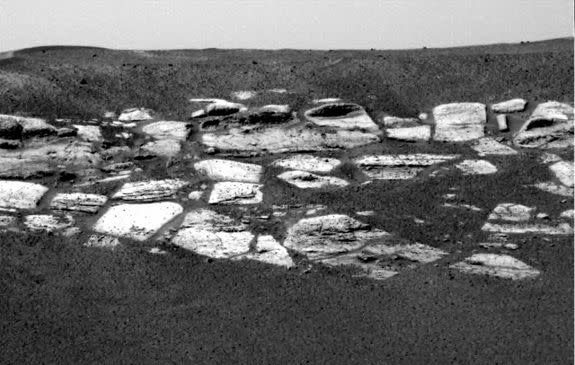
Image: NASA/JPL-CalTech
2. Finding delicious "blueberries"
One of Opportunity's first big finds, in April 2004 was small, round "spherules," photographed by its microscopic imager near Fram Crater. The spherules are iron-heavy "concretions formed by action of mineral-laden water inside rocks," according to NASA. They're referred to as "blueberries" thanks to the color that NASA's false color images assign them and they're also good evidence that Mars was once a wet planet.
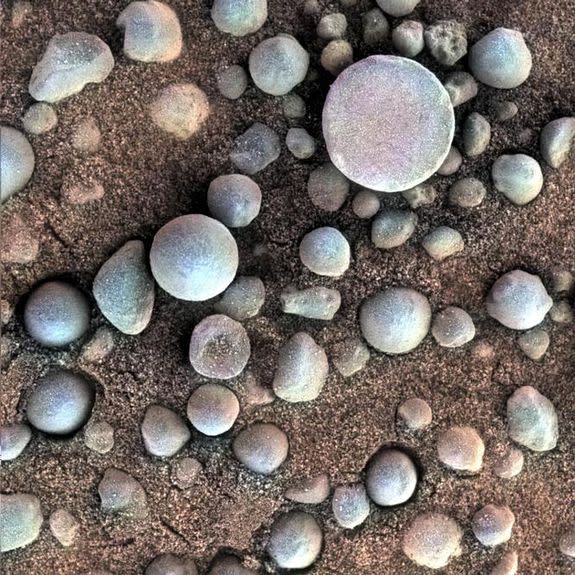
Image: NASA
Over 8 years later, though, Opportunity would discover a completely different type of spherule at the Endeavour Crater that were likely older and not as iron-heavy as the original "blueberries" the rover found in its early days.
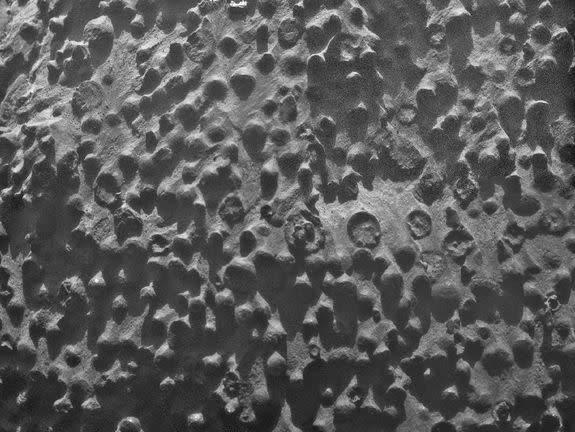
Image: NASA/JPL-Caltech/Cornell Univ./ USGS/Modesto Junior College
That the discoveries came eight years apart is a testament to not only Opportunity's tools but the longevity of its mission.
3. Visiting Victoria Crater

Image: NASA/JPL
In late 2006, already rumbling well past its expected end date, Opportunity visited the half-mile-wide Victoria Crater to examine the exposed levels of rock that gave NASA a look at Mars' geological history.
It would take a year of circling the crater before scientists found a safe way for Opportunity to begin its descent into the crater in November 2007. After it finally made its way down, the rover spent almost a year exploring the crater before leaving in August 2008.
4. Surviving a dust storm
Though a planet-wide dust storm has finally brought Opportunity's mission to a close, it survived another severe weather event early on, riding out a dust storm that blocked most of the light from the Martian sky in July 2007 while the rover was looking for way in to Victoria Crater.
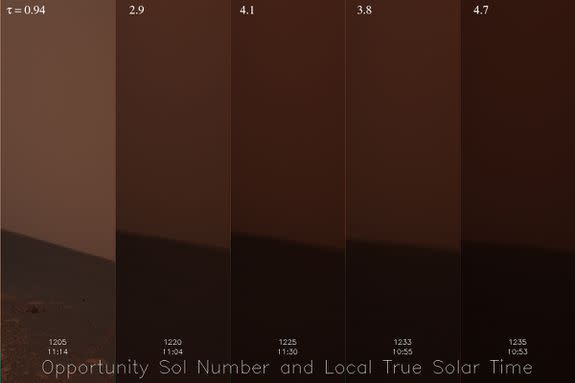
Image: NASA/JPL-Caltech/Cornell
The rover survived through low power mode and warmed back up by September 2007 as the skies slowly cleared, paving the way for it to eventually enter Victoria Crater a few months later, as noted above.
5. An off-world record rover
One more testament to the scrappy, spunky rover's longevity: In July 2014, Opportunity set a new record for the longest off-world drive (i.e., not on Earth) ever, surpassing the previous record (24.2 miles) set by Russia's Lunokhod 2 moon rover in 1973.
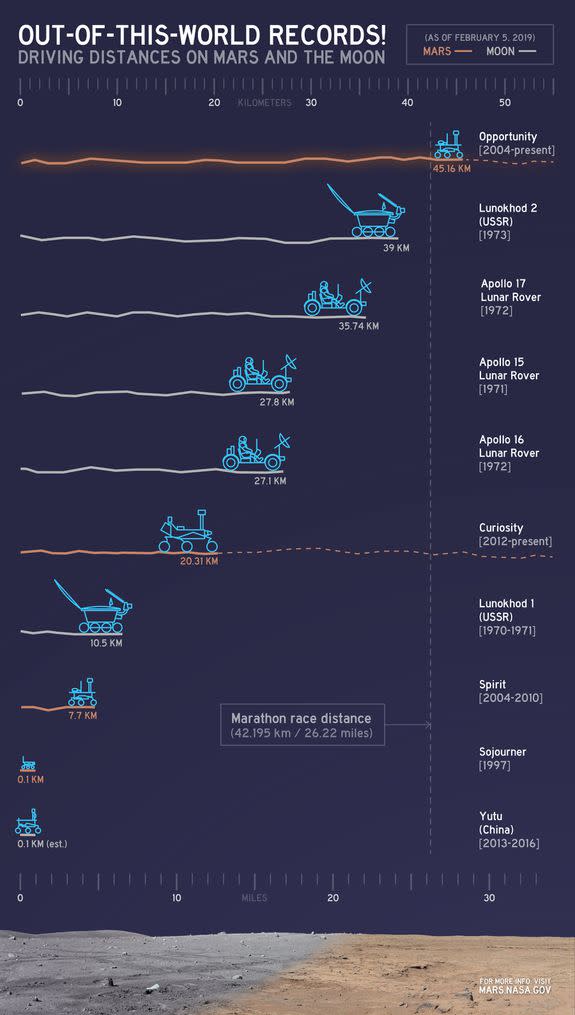
Image: NASA/JPL-Caltech
All told, Opportunity journeyed just a hair over 28 miles before NASA lost contact with the rover in June 2018.
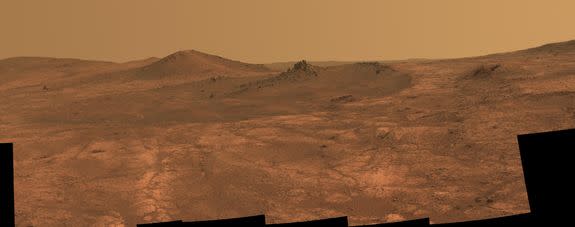
Image: NASA/JPL-Caltech/Cornell Univ./Arizona State Univ
And now the time has come to say farewell, dear Opportunity. Thank you so much for your discoveries, your toughness, your shrewdness. We'll miss the hell out of you and you've left quite the legacy for rovers that follow.
Until we see you in the next life, goodbye.
